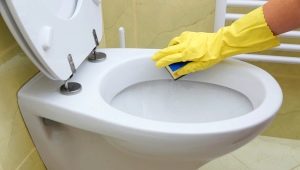How to wash an acrylic bath?
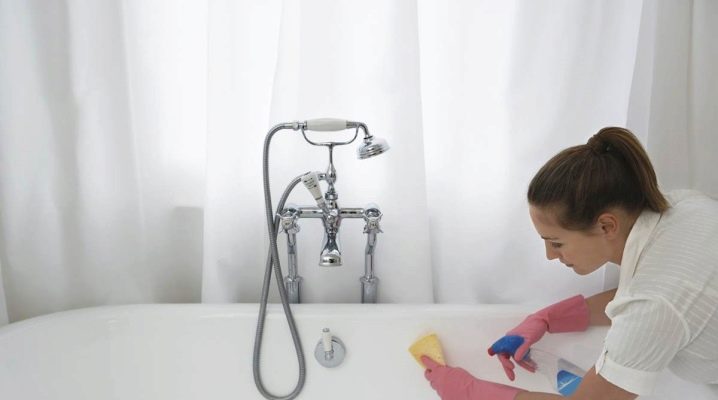
Practical and durable acrylic bathtubs are often installed in modern apartments, but the polymer quickly loses its appearance with improper care. To maintain a sparkling whiteness and prevent cracks and scratches, you need to properly care for your acrylic bathtub.
Advantages
Caring for modern plumbing is different from the usual washing of cast-iron and metal bathtubs. With a careful attitude, acrylic products delight their owners for at least three decades. They compare favorably with old bulky bathtubs with lightness, a variety of models, a sparkling white coating, the ability to retain heat for a long time, corrosion resistance, and the absence of mold and fungus.

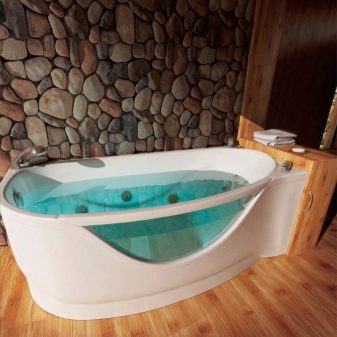
Care
Acrylic can be scratched while bathing pets. Metal buckets and basins, hard brushes and washcloths will damage the polished surface. The use of detergents with abrasives and chlorine also adversely affects the quality of the acrylic coating: it becomes dull, loses its attractive sheen.
Attempts to wash the bath with gels containing solvents and ammonia will result in damage to the top layer: at first it will become cloudy, and with frequent and prolonged contact with these substances it will deform.
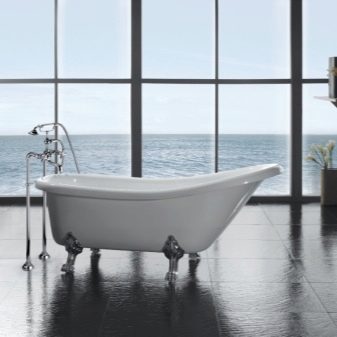

The capricious polymer does not even tolerate soaking laundry. Powder, stain removers used in washing are harmful to a fragile snow-white bath. Microcracks resulting from improper operation and maintenance are not only unaesthetic, but also contribute to the further destruction of the bath coating. Plastic does not tolerate exposure to high temperatures.
Cleaning products
In order for the bathtub covered with acrylic to remain snow-white, it is necessary to clean it properly every day, not to neglect the prevention of pollution. The smooth surface of the polymer does not absorb dirt, so it is enough to wash it with a soft sponge with soap and rinse under running water. So that drops of water, drying, do not leave marks, you need to wipe the coating with a dry cloth. If there was no time for these simple actions, and yellowness and limescale still appeared on the surface of the bath, you should use products designed specifically for cleaning acrylic bathtubs. The quality of funds from well-known manufacturers is beyond doubt:
- "Ravak" - a line of products designed for cleaning, disinfection, elimination of especially strong pollution, restoration of the protection layer.
- "Acrilan", gently acting on the surface, removes soap and limescale, rust and mold, and also forms a protective film, giving extra shine.

- "Tim Profi" copes well even with old pollution, restores shine and radiance, fights unpleasant odors. In addition, it is necessary for the care of a hydromassage bath. In order for the mechanism to work for a long time, it must be cleaned in a timely and high-quality manner.
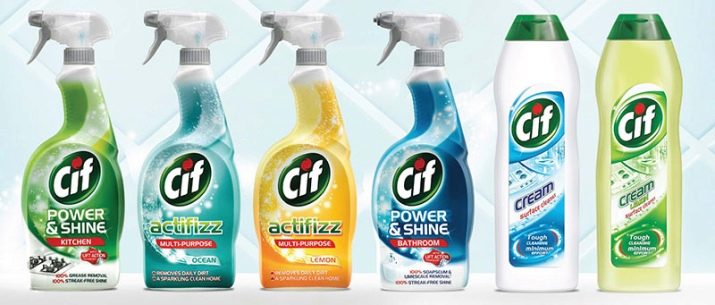
- Bass effectively cleans acrylic bathtubs and showers.
- Cif universal cream is also suitable for cleaning acrylic products.With it, you can get rid of yellow plaque, and rust, and lime deposits.
- "Acryl Polish" - a line of products for the care, repair and polishing of acrylic coatings.
- "Mr. Cleaner" is a wonderful budget option that not only copes with all kinds of pollution and effectively fights bacteria, but also protects the top layer of the bath from fungus. It coats the surface, thereby preventing dirt from accumulating on the acrylic. After applying "Mr. Chistera", the bath will remain snow-white for a long time and retain its shine.
- Bon Professional has similar properties. It also forms a special film that prevents dirt from settling on the tub.
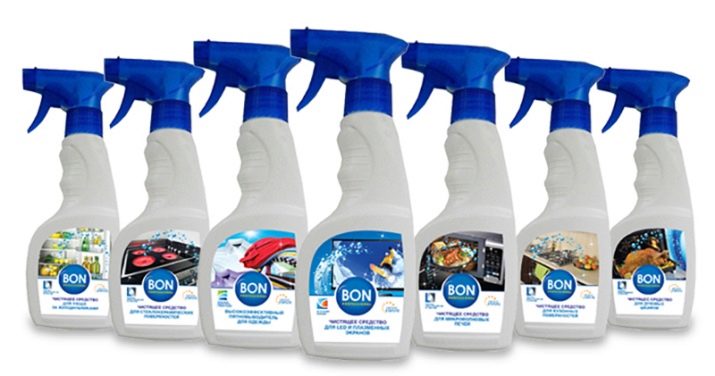
Liquid detergents are applied with a soft sponge, sprays are sprayed onto the surface of the bath. After a certain period of time specified in the instructions for use (usually from 5 to 20 minutes), the agent is washed off with water. Some gels and liquids for washing acrylic bathtubs can also be used to disinfect them (for example, Team Pro, Ravak Desinfectant). After filling the bath with water and adding a disinfectant, you need to wait about 10 minutes, then drain the water, rinse the bowl thoroughly.
For daily cleaning, ordinary dishwashing gel is quite suitable, and old limescale will have to be dealt with with the help of gels and creams specially designed for this purpose: Sanfor, Gel WC 5+, Ravak Turbocleaner.
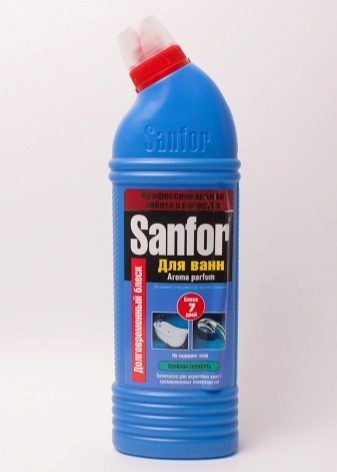

Folk remedies
To wash an acrylic bath at home, some folk methods will help:
- An indispensable assistant in removing limescale is citric acid. The bath should be filled with hot water, add a couple of bags of this product.After a few hours, rinse the acrylic surface with running water, wipe with a soft cloth. Cleaning with citric acid should not be repeated often, 1-2 times a year is enough.
- To remove stains from acrylic, ordinary toothpaste with a whitening effect is able to.
- A mixture of ammonia and hydrogen peroxide helps get rid of yellowness.
- A slurry of soda and water can clean off rusty spots. It is enough to apply it to the pollution, then gently rinse. Keep in mind that rubbing the surface of this polymer is strictly prohibited.
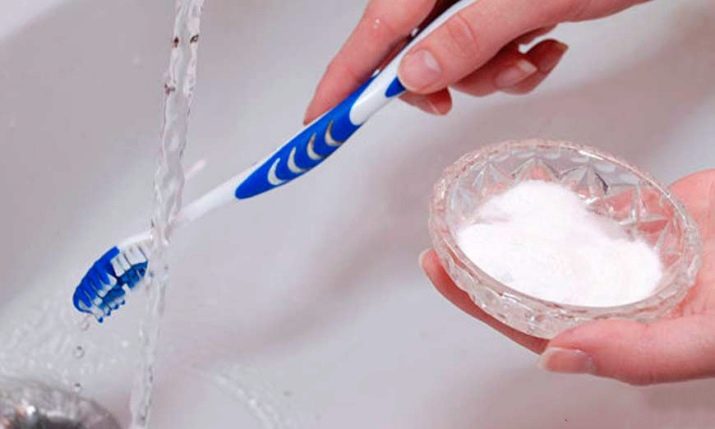
- Table vinegar copes with many types of pollution. 1 liter of the product is poured into a bath filled with warm water. In the morning, it is thoroughly washed with a soft sponge, rinsed under running water and wiped dry.
- If a solid layer of limescale and water stone has formed on the surface of the bath, then a slurry of washing powder, water, 2 tablespoons of Whiteness and a tablespoon of vinegar will help remove it. Apply the composition for 20 minutes, then wash the surface with a soft cloth or sponge, pressing lightly. At the end of the cleaning, the area to be cleaned must be thoroughly rinsed under running water.
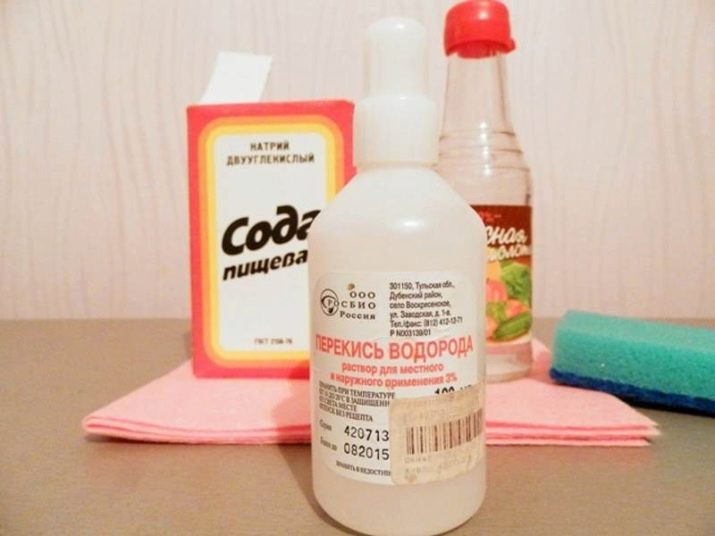
Cleaning after repair
Sometimes the need to wipe stains from plastic arises immediately after the installation of plumbing or after repairs in the bathroom. To wipe off the sealant, you need efficiency. Until it hardens, it can be removed with a rag and washed with a detergent. If the silicone layer has already hardened, it is better to give up trying to remove it with all sorts of solvents and acetonedangerous for acrylic.
Dried sealant must be removed mechanically very carefully: with a blade, clerical or construction knife.

Removing the primer from the polymer surface is also not easy, especially without the help of chemicals harmful to it, such as white spirit and acetone. One option is to try to remove the stain mechanically, after softening it. Hot water is poured into the bath, drained after a quarter of an hour. This procedure must be repeated several times. As a result, the primer softens a little, and you can try to rub it off with a blade or a clerical knife.
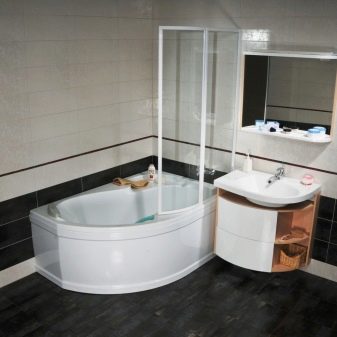

You need to be extremely careful, as the risk of damaging the plastic is extremely high. Acrylic can lose its luster, become matte.
Restoration with liquid acrylic
If the bath is already hopelessly damaged, and folk and chemical remedies are powerless, then it remains to resort to extreme measures: cover the bath with liquid acrylic. They also restore old cast-iron or steel bathtubs. A brush and roller are not needed for work. Liquid acrylic is simply poured onto the surface of the bath, achieving its uniform distribution. In addition to acrylic, enamel contains epoxy resin. As a result of interaction with the hardener, it polymerizes, and the coating becomes more durable. Any color can be added to the enamel so that the unique bath fits perfectly into the interior.

For information on how to care for an acrylic bath, see the following video.




























